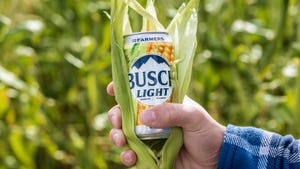Critically appraise hay before you buy
Knowledge is power when it comes to feeding hay in the winter months. Forage testing can give you peace of mind about the quality of the feedstuffs you intend to purchase.
December 10, 2018

Winter has officially arrived at our place, and we typically cash flow any necessary hay purchases in the fall and through the end of the calendar year. Over the weekend, a couple of loads of hay were delivered to our place, and I think our stockpile of forages is finally now large enough to last until the grazing season begins in June.
My husband takes a great deal of time and care in purchasing high quality hay that will provide adequate nutrition for our gestating and lactating mama cows, our herd sires and our yearling bulls and replacement females. With their specific needs in mind, he shops for quality, availability, price and delivery. His critical eye and patience to buy has served us well over the years in avoiding purchases of moldy hay or sky-high prices. Additionally, developing ongoing relationships with hay producers in our area offers consistency in our hay purchases.
Whether you’re buying a new piece of equipment or feedstuffs, it’s important to critically appraise each purchase for quality.
When it comes to hay, every jockey in America can promise you the best hay in the land, but a quick visual appraisal can only tell you so much about what the hay actually has to offer.
That’s where testing comes in.
It may seem tedious or an unnecessary step and expense, but without that information, it’s really a best guess when it comes to buying hay.
Christine Gelley, Ohio State University Extension agriculture and natural resources educator, highlights the importance of testing hay in a recent article titled, “Hay Quality: Trash vs. Treasure.”
Gelley writes, “How low is too low when it comes to hay quality? The answer depends on your class of livestock, their nutritional needs, and your access to supplemental feed.
“Without knowing the actual nutritive value of the hay, all recommendations are relative and subject to error. The only way to confidently adjust your feeding program in relation to hay quality is to have hay analyzed by a laboratory.”
Gelley says producers can look at characteristics such as hay color, scent, dustiness and texture; however, these indicators are not definitive on quality. On the flip side, buyers can also avoid purchasing hay with obvious problems such as mold or poisonous weeds.
She says, “Whether you choose to buy hay or make it, having bales tested can save you time and money over the winter. Pay for a good test that tells you more than just crude protein. Levels of digestible fiber and net energy are important too.”
She recommends testing multiple bales from each cutting. Once you receive test results back, she advises working with a nutritionist, veterinarian or Extension educator to formulate a feeding program with the hay supply.
Once you’ve hauled hay home for the winter, storage can help preserve your stacks. If possible, store hay on high ground, elevated off the soil and under cover to protect it from rain and snow.
She adds, “Round bales stored outside should be oriented with the buff sides facing each other, with the line of bales proceeding north/south rather than east/west, and with three feet between rows. This will allow the bales to dry as fast as possible after a precipitation event.
“Hay bale damage by the elements significantly increases the amount of hay waste you will have. On a 5-foot round bale, the outer 4 inches make up 25% of the total hay. Which means, if that 4 inches is wasted, you will need 25% more hay to feed your animals than you initially accounted for.”
Ultimately, it may be tempting to buy the cheapest hay available; however, knowledge is power when it comes to buying hay. Only a forage sample and test can give you accurate information about hay, so before you buy, don’t hesitate to ask for a test. Then store properly to protect your investment.
The opinions of Amanda Radke are not necessarily those of beefmagazine.com or Farm Progress.
About the Author(s)
You May Also Like




.png?width=300&auto=webp&quality=80&disable=upscale)
